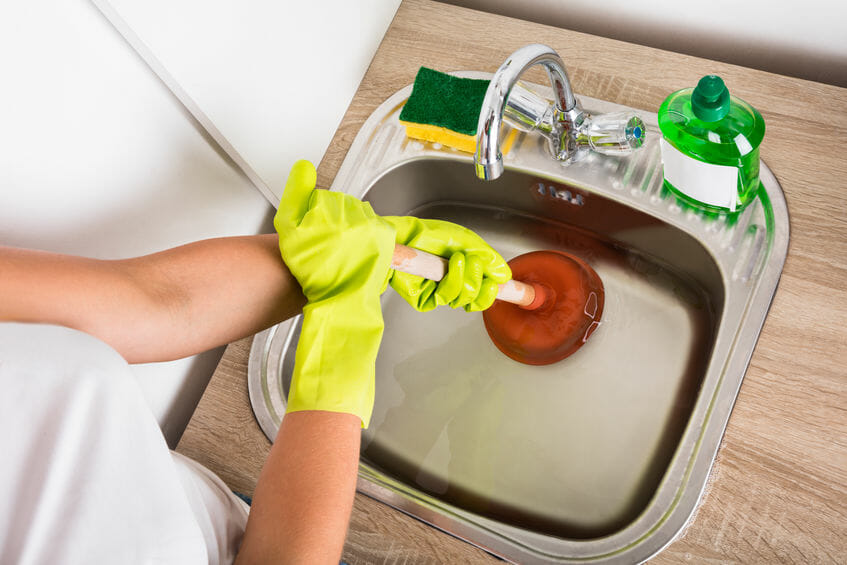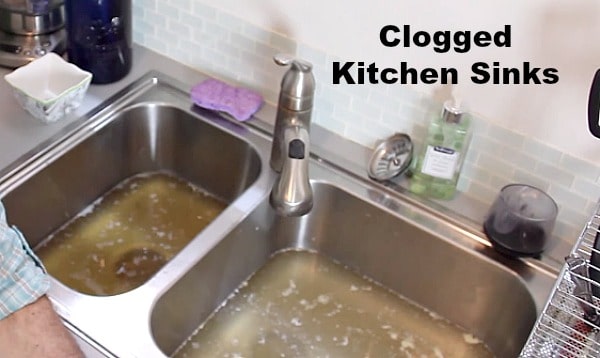Decoding Drain Delays - 6 Reasons Your Kitchen Sink Hesitates
Decoding Drain Delays - 6 Reasons Your Kitchen Sink Hesitates
Blog Article
Are you currently trying to locate details concerning Easy Ways to Unclog Any Drain in Your Home?

It's not normal for your cooking area sink to congest numerous times in one month. If your sink blocks two times a week, there's some trouble taking place.
An obstructed cooking area drainpipe doesn't simply slow down your duties, it degrades your whole plumbing system, bit by bit. Below are some common routines that encourage sink clogs, and also exactly how to prevent them.
You need proper waste disposal
Recycling waste is wonderful, but do you focus on your organic waste as well? Your cooking area ought to have two different waste boxes; one for recyclable plastics and one more for natural waste, which can come to be compost.
Having actually a designated trash bag will certainly help you as well as your family members prevent throwing pasta and also other food remnants away. Normally, these remnants soak up dampness and also become blockages.
The mistake isn't from your cooking area sink in any way
Maybe the trouble isn't from your cooking area sink, but the whole drain system. In such a situation, you might notice that other sinks as well as drains pipes obtain clogged every other week. You need a professional plumbing service to repair this.
You're throwing coffee down the tubes
Made use of coffee premises and also coffee beans still absorb a considerable amount of wetness. They might appear small sufficient to throw down the drain, but as time goes on they start to swell as well as occupy even more room.
Your coffee grounds should go into organic waste disposal. Whatever fraction leaves (possibly while you're depleting) will certainly be cared for throughout your regular monthly clean-up.
You have actually been consuming a great deal of oily foods
Your kitchen area sink might still obtain obstructed despite organic waste disposal. This might be due to the fact that you have a diet regimen abundant in oily foods like cheeseburgers.
This oil layers the within pipes, making them narrower as well as more clog-prone.
Utilize a plunger
Your pipeline had not been taken care of appropriately in the first place
If you've been doing none of the above, but still obtain routine clogs in your cooking area sink, you should certainly call a plumber. There may be an issue with how your pipelines were mounted.
While your plumber shows up, check for any leakages or abnormalities around your cooking area pipelines. Don't attempt to deal with the pipelines yourself. This may create a mishap or a kitchen flooding.
A person tried to wash their hair in the cooking area sink
There's a right time and also location for everything. The cooking area sink is simply not the right area to clean your hair. Washing your hair in the cooking area sink will make it clog one way or another unless you utilize a drain catcher.
While a drainpipe catcher may catch most of the results, some strands might still make it through. If you have thick hair, this may suffice to slow down your water drainage as well as at some point develop an obstruction.
There's even more dirt than your pipelines can manage
If you obtain fruits directly from a ranch, you may see more kitchen area dirt than other individuals that shop from a shopping center. You can easily repair this by cleaning the fruits as well as veggies effectively before bringing them right into your home.You require appropriate garbage disposal
My Kitchen Sink Won’t Drain - What Should I Do?
If Your Sink Has a Garbage Disposal...
Turn on the disposal. If the disposal hums and doesn’t turn, then there’s clog in the disposal unit.
Go to your circuit breaker panel, and switch off the circuit breaker to your garbage disposal.
Back in your kitchen, double-check that your garbage disposal is off by trying to turn it on. The disposal should not move, and it should not make any noise.
Lie down underneath your sink so that you can see and access the bottom of the disposal unit. Look for a hole that looks like the head of a hex-head bolt in the center of the unit.
Place an Allen wrench inside this hole and turn it from side to side until you feel a decrease in resistance and are able to rotate the wrench completely in a single direction. This action rotates your disposal’s blade manually.
Put the wrench aside, and press the disposal unit’s reset button or switch.
Flip your garbage disposal’s circuit breaker switch back on, and turn on the unit to see if the obstruction has cleared. If it hasn’t, repeat the steps above until the obstruction is removed.
How to Unclog a Kitchen Sink Drain
If you have a double bowl sink, seal one side of the sink with an airtight lid or a second plunger before plunging the other side. Otherwise, you won’t be able to create adequate suction.
Place the cup of the plunger completely over the drain opening.
Turn on the faucet, and let the water run until it completely covers the cup of the plunger.
Start plunging by pushing the plunger down and pulling up again in order to build up suction. Make sure that the edges of the plunger stay in contact with your sink, or else you’ll lose the suction.
If you have trouble forming a seal between your sink and plunger, add petroleum jelly to the mouth of your plunger, and try again.
Plunge about five or six times before removing the plunger to see if water starts to drain properly. In some cases, you’ll even be able to feel the clog become dislodged while you plunge because suddenly there will be much less resistance. Repeat the plunging process until the clog clears.
Once water is draining properly again, run hot water down the drain for 5 minutes to help clear away grease, grime, and debris from the clog. https://www.plumbingjoint.com/blog/2019/august/my-kitchen-sink-won-t-drain-what-should-i-do-/

My Kitchen Sink Won’t Drain - What Should I Do?
If Your Sink Has a Garbage Disposal...
How to Unclog a Kitchen Sink Drain
https://www.plumbingjoint.com/blog/2019/august/my-kitchen-sink-won-t-drain-what-should-i-do-/
I stumbled upon that blog posting about What To Do When Your Kitchen Sink Won’t Drain when scouting around the web. In case you enjoyed our page if you please remember to pass it around. Thanks so much for your time invested reading it.
Contact
Report this page